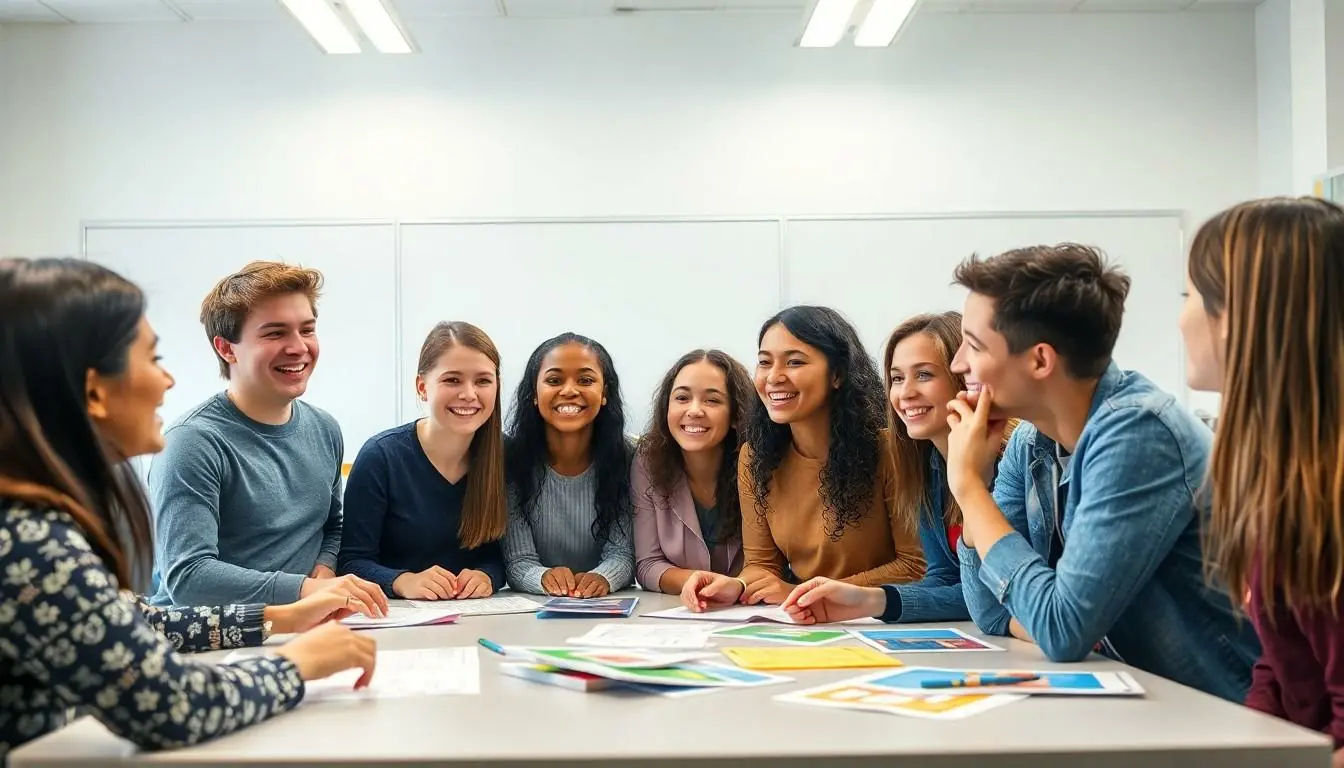In the world of education, student feedback is like gold. It’s the treasure map that leads teachers to improve their methods and enhance learning experiences. But let’s be honest: navigating through the sea of comments can sometimes feel like deciphering ancient hieroglyphs. Fear not! This article dives into a treasure trove of student feedback examples that can illuminate the path to better teaching.
Whether it’s the classic “I love this class!” or the more nuanced “Can we not have quizzes on Mondays?” these insights pack a punch. They can spark laughter, inspire change, and even make educators rethink their entire approach. So grab your metaphorical shovel and get ready to unearth the gems that will not only boost classroom morale but also create a vibrant learning environment.
Table of Contents
ToggleImportance Of Student Feedback
Student feedback plays a crucial role in enhancing the educational experience. Educators utilize insights from students to identify strengths and areas for improvement in their teaching strategies. Constructive criticism often leads to innovative approaches and engaging lesson plans.
Listening to students fosters mutual respect and open communication. When teachers show they value student opinions, it constructs a positive classroom environment. Positive feedback reinforces effective methods, motivating educators to continue their successful practices.
Data highlights that students who provide feedback often feel more invested in their learning process. Engagement increases when students believe their voices matter. This involvement can enhance their academic performance and satisfaction.
Adjustments based on student feedback can lead to targeted interventions. Tailoring teaching methods to meet student needs often results in improved comprehension. Moreover, demonstrating responsiveness to feedback instills a sense of ownership in learners, prompting them to take responsibility for their education.
Regularly collecting feedback cultivates a culture of continuous improvement. Such a practice encourages students to reflect on their learning, building critical thinking skills. Ultimately, productive dialogue between educators and students enhances the overall learning experience.
Types Of Student Feedback Examples
Student feedback comes in various forms and each type serves a specific purpose in enhancing the educational experience. Below are examples of the most significant feedback types.
Positive Feedback Examples
Positive feedback inspires educators to continue effective strategies. Comments such as “I love how you make lessons interactive” show appreciation for engaging teaching methods. Students often express enthusiasm about specific projects, listing favorites that enriched their understanding. Statements like “Your enthusiasm makes learning fun” highlight the impact of a teacher’s attitude on student motivation. An affirmation like “I felt supported during challenging topics” reinforces the value of a constructive classroom environment.
Constructive Feedback Examples
Constructive feedback provides actionable insights for improvement. Phrases like “I wish we could have more group discussions” suggest a desire for increased peer interaction. Comments such as “Some lessons felt too fast-paced” highlight the need for adjustments in teaching speed. Another example includes “More examples would help me understand better,” indicating areas where additional support may benefit learners. Specific feedback like “I struggled with that last project” encourages teachers to evaluate project complexity.
How To Collect Student Feedback
Educators can gather valuable insights through systematic feedback collection methods. By utilizing various strategies, teachers enhance their understanding of student experiences.
Surveys And Questionnaires
Surveys and questionnaires enable educators to collect structured feedback efficiently. They can include multiple-choice questions and open-ended prompts to gather both quantitative and qualitative data. Teachers may conduct surveys at various intervals, such as at the end of a unit or semester. Utilizing online tools can streamline distribution and data analysis. Customizing questions to target specific aspects of the learning experience ensures relevance. Educators benefit from the anonymity that surveys provide, encouraging honest and candid responses. Regularly updating survey content keeps questions fresh and engaging for students.
Focus Groups
Focus groups offer a collaborative environment for gathering richer insights. When educators facilitate discussions with small groups of students, they encourage deeper exploration of feedback topics. Group interactions often lead to more detailed and nuanced comments than surveys alone. Selecting diverse participants enhances the range of perspectives shared. Teachers can pose open-ended questions to stimulate conversation and guide the discussion. Capturing the dialogue through notes or recordings allows for thorough analysis afterward. This method fosters a sense of inclusion, making students feel valued and heard in the feedback process.
Utilizing Student Feedback
Utilizing student feedback effectively transforms the educational experience. Educators gain valuable insights for improvement through structured comments.
Improving Teaching Methods
Educators can refine their teaching techniques based on direct input from students. When learners express preferences for interactive activities, teachers often adapt their lesson plans to incorporate more engagement. Feedback indicating a preference for varied instruction styles encourages educators to diversify their approaches. Positive responses to collaborative projects may inspire the inclusion of more group work. By focusing on specific suggestions, teachers enhance strategies that resonate with student needs, ultimately boosting satisfaction and participation.
Enhancing Course Content
Content improvement significantly benefits from student feedback. When students request additional resources or depth in certain topics, educators can adjust materials accordingly. Feedback highlighting confusion about specific concepts prompts teachers to clarify or modify explanations. As students identify gaps in learning, revisions can make course content more comprehensive and accessible. Adapting curriculum based on student suggestions cultivates a richer learning experience that aligns with their academic goals and interests.
Conclusion
Embracing student feedback is essential for creating a dynamic educational environment. By actively listening to students, educators can uncover valuable insights that lead to improved teaching strategies and enriched learning experiences. This ongoing dialogue not only fosters a sense of community but also empowers students to take ownership of their education.
Utilizing structured methods like surveys and focus groups enables educators to gather meaningful feedback efficiently. Whether it’s celebrating successes or addressing areas for improvement, the impact of student feedback can be transformative. Ultimately, prioritizing student voices cultivates a responsive classroom atmosphere where everyone thrives.





